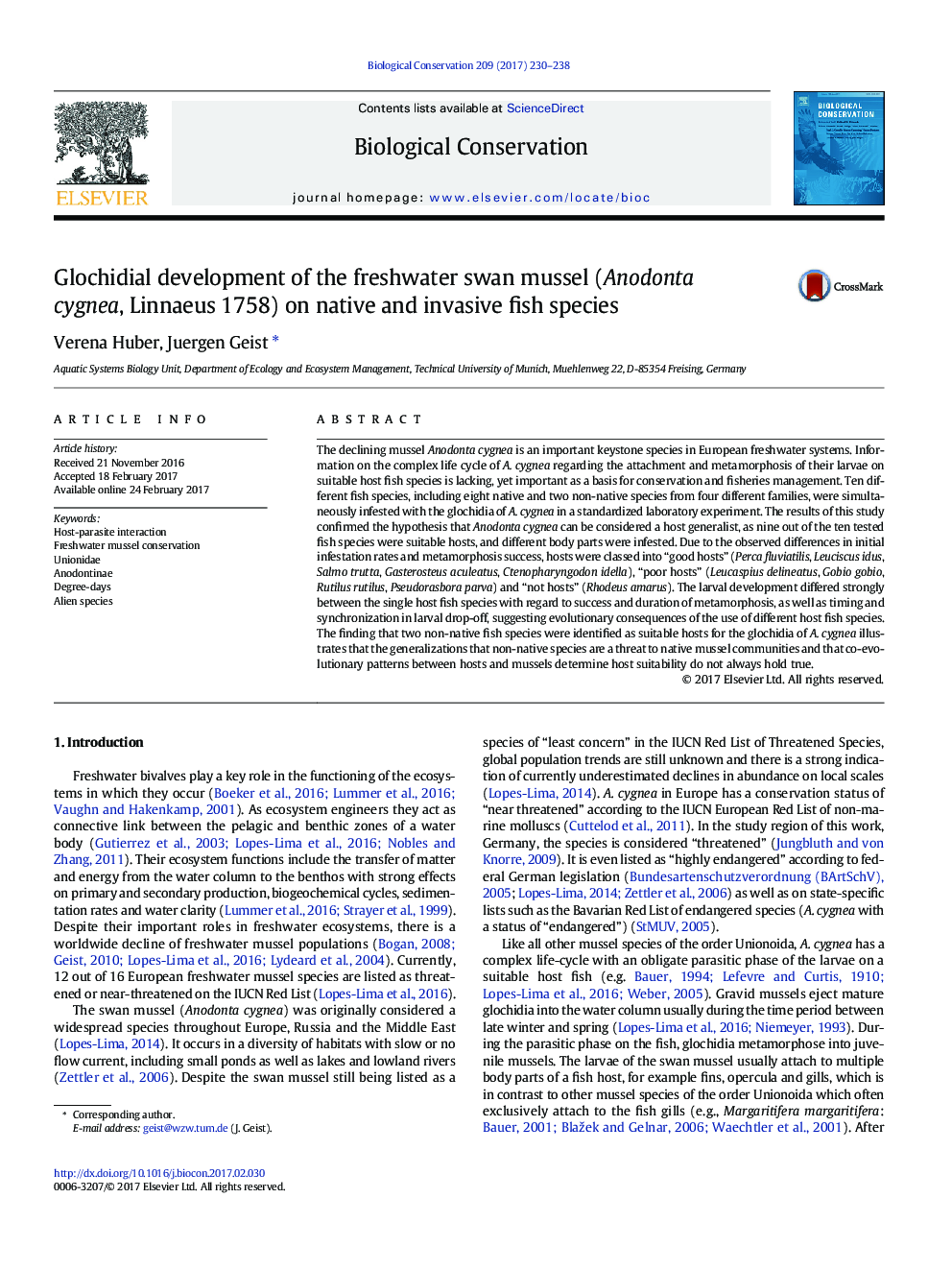| کد مقاله | کد نشریه | سال انتشار | مقاله انگلیسی | نسخه تمام متن |
|---|---|---|---|---|
| 5743327 | 1617893 | 2017 | 9 صفحه PDF | دانلود رایگان |

- We assessed the interaction of Anodonta cygnea mussels with fish hosts.
- Host-suitability and glochidia development strongly varied between fish species.
- Perca fluviatilis was the most important host.
- One of the non-native fishes was also a suitable host.
- Conservation needs to consider evolutionary consequences of host use.
The declining mussel Anodonta cygnea is an important keystone species in European freshwater systems. Information on the complex life cycle of A. cygnea regarding the attachment and metamorphosis of their larvae on suitable host fish species is lacking, yet important as a basis for conservation and fisheries management. Ten different fish species, including eight native and two non-native species from four different families, were simultaneously infested with the glochidia of A. cygnea in a standardized laboratory experiment. The results of this study confirmed the hypothesis that Anodonta cygnea can be considered a host generalist, as nine out of the ten tested fish species were suitable hosts, and different body parts were infested. Due to the observed differences in initial infestation rates and metamorphosis success, hosts were classed into “good hosts” (Perca fluviatilis, Leuciscus idus, Salmo trutta, Gasterosteus aculeatus, Ctenopharyngodon idella), “poor hosts” (Leucaspius delineatus, Gobio gobio, Rutilus rutilus, Pseudorasbora parva) and “not hosts” (Rhodeus amarus). The larval development differed strongly between the single host fish species with regard to success and duration of metamorphosis, as well as timing and synchronization in larval drop-off, suggesting evolutionary consequences of the use of different host fish species. The finding that two non-native fish species were identified as suitable hosts for the glochidia of A. cygnea illustrates that the generalizations that non-native species are a threat to native mussel communities and that co-evolutionary patterns between hosts and mussels determine host suitability do not always hold true.
Journal: Biological Conservation - Volume 209, May 2017, Pages 230-238